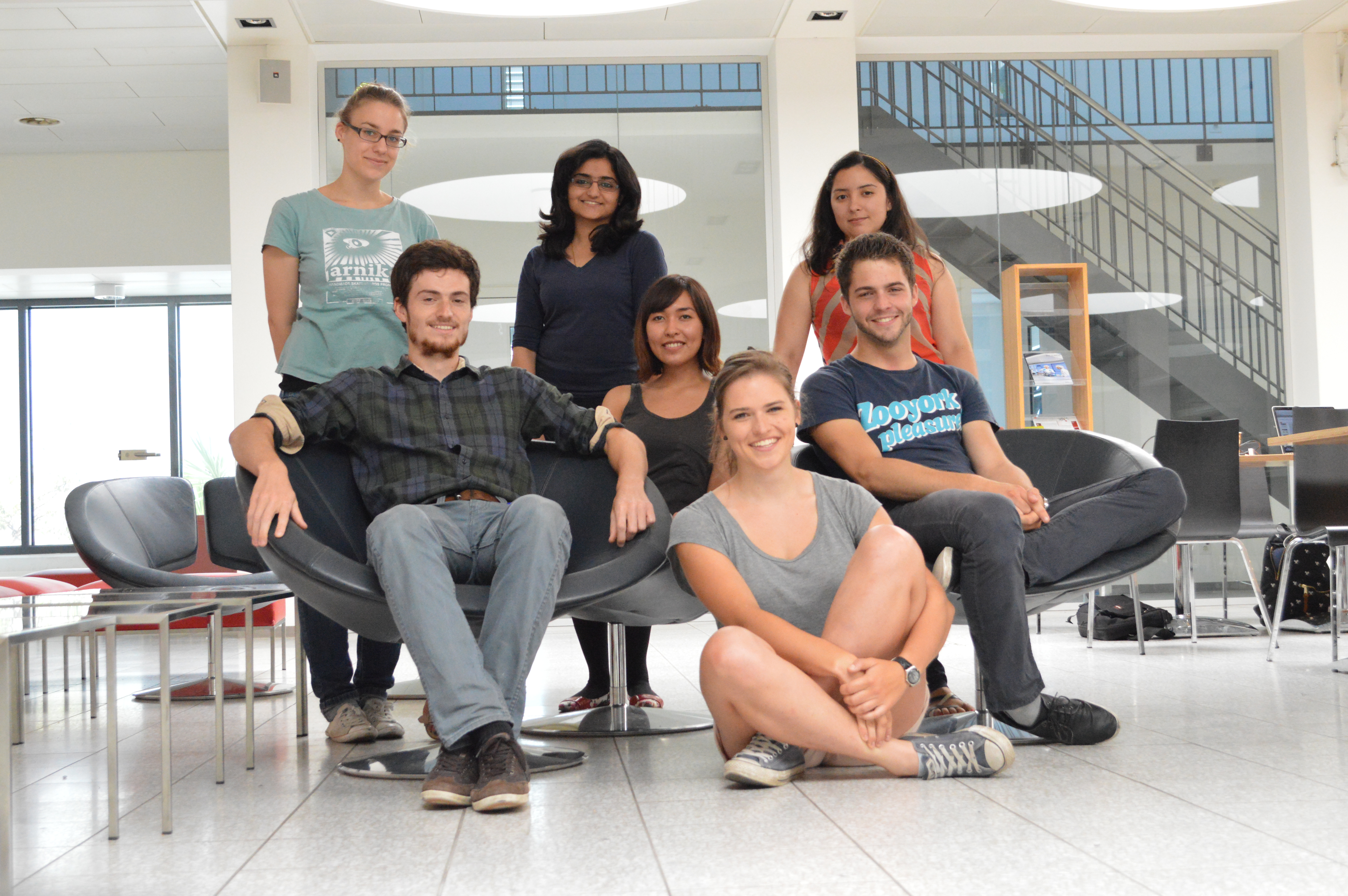Team:ETH Zurich
From 2013.igem.org
| Line 58: | Line 58: | ||
</html> | </html> | ||
<br clear="all" /> | <br clear="all" /> | ||
| - | <p>Colisweeper is an interactive, biological version of the Minesweeper computer game, based on luxI/luxR quorum sensing and chromogenic enzymatic reactions. The goal is to clear an agar “minefield” without detonating mines.<br>Genetically engineered Escherichia coli colonies are used as sender-cells (mines) and receiver-cells (non-mines). Mines secrete the signaling molecule N-(3-oxohexanoyl)-l-homoserine lactone (OHHL) whereas non-mines process the signal. To distinguish between OHHL-levels, a library of PLuxR promoters with various sensitivities was created through site-saturation mutagenesis. High-pass filters were constructed to control the expression of different orthogonal hydrolases in non-mines, depending on the number of surrounding mines. <br>Additionally, the mines express their own hydrolase.A spatiotemporal reaction-diffusion model was established to evaluate and improve the system. To play Colisweeper, a colorless substrate solution is pipetted onto a colony of choice. The result is a defined color change within minutes, allowing identification of the played colony and the number of mines surrounding it. | + | <p>Colisweeper is an interactive, biological version of the Minesweeper computer game, based on luxI/luxR quorum sensing and chromogenic enzymatic reactions. The goal is to clear an agar “minefield” without detonating mines.<br>Genetically engineered <i>Escherichia coli</i> colonies are used as sender-cells (mines) and receiver-cells (non-mines). Mines secrete the signaling molecule N-(3-oxohexanoyl)-l-homoserine lactone (OHHL) whereas non-mines process the signal. To distinguish between OHHL-levels, a library of PLuxR promoters with various sensitivities was created through site-saturation mutagenesis. High-pass filters were constructed to control the expression of different orthogonal hydrolases in non-mines, depending on the number of surrounding mines. <br>Additionally, the mines express their own hydrolase.A spatiotemporal reaction-diffusion model was established to evaluate and improve the system. To play Colisweeper, a colorless substrate solution is pipetted onto a colony of choice. The result is a defined color change within minutes, allowing identification of the played colony and the number of mines surrounding it. |
</p> | </p> | ||
{{:Team:ETH_Zurich/templates/footer}} | {{:Team:ETH_Zurich/templates/footer}} | ||
Revision as of 15:54, 15 September 2013
Colisweeper is an interactive, biological version of the Minesweeper computer game, based on luxI/luxR quorum sensing and chromogenic enzymatic reactions. The goal is to clear an agar “minefield” without detonating mines.
Genetically engineered Escherichia coli colonies are used as sender-cells (mines) and receiver-cells (non-mines). Mines secrete the signaling molecule N-(3-oxohexanoyl)-l-homoserine lactone (OHHL) whereas non-mines process the signal. To distinguish between OHHL-levels, a library of PLuxR promoters with various sensitivities was created through site-saturation mutagenesis. High-pass filters were constructed to control the expression of different orthogonal hydrolases in non-mines, depending on the number of surrounding mines.
Additionally, the mines express their own hydrolase.A spatiotemporal reaction-diffusion model was established to evaluate and improve the system. To play Colisweeper, a colorless substrate solution is pipetted onto a colony of choice. The result is a defined color change within minutes, allowing identification of the played colony and the number of mines surrounding it.
 "
"











